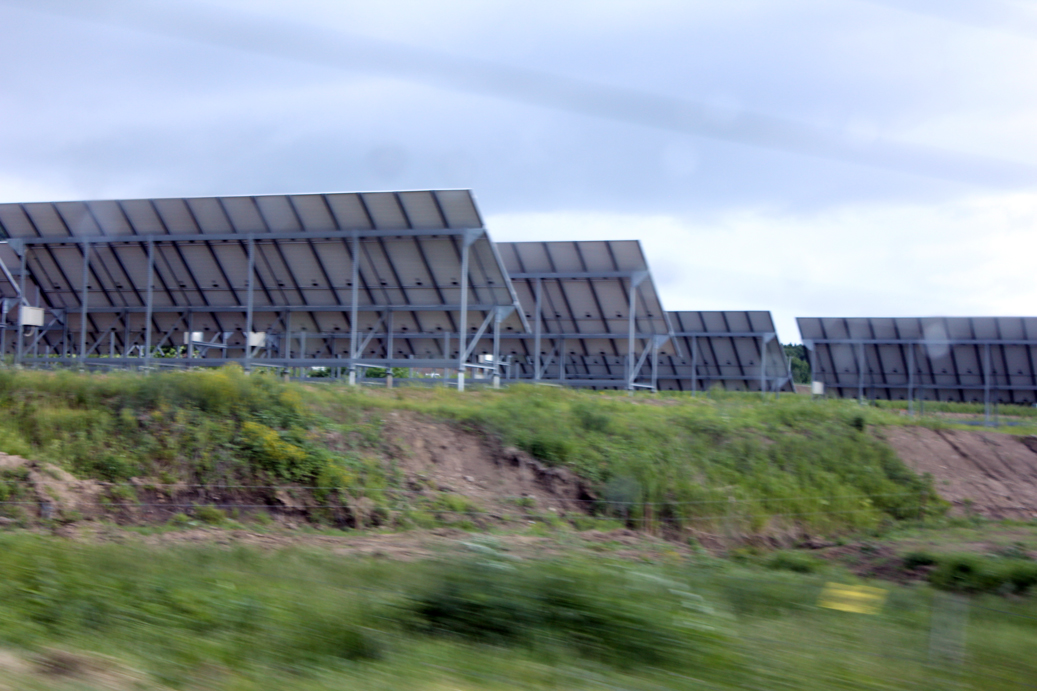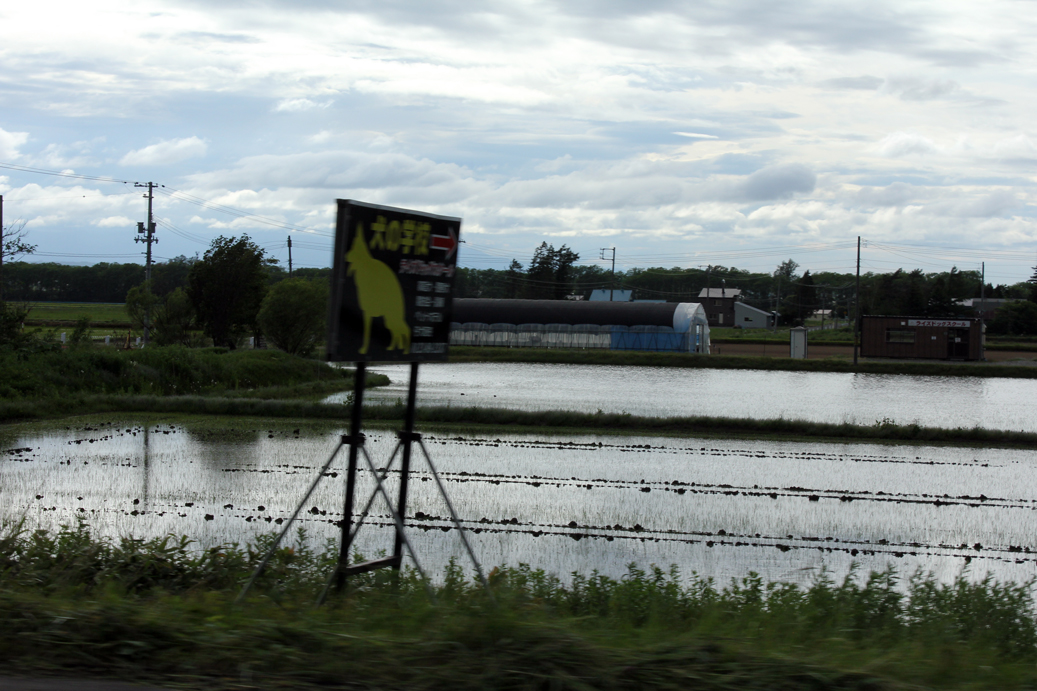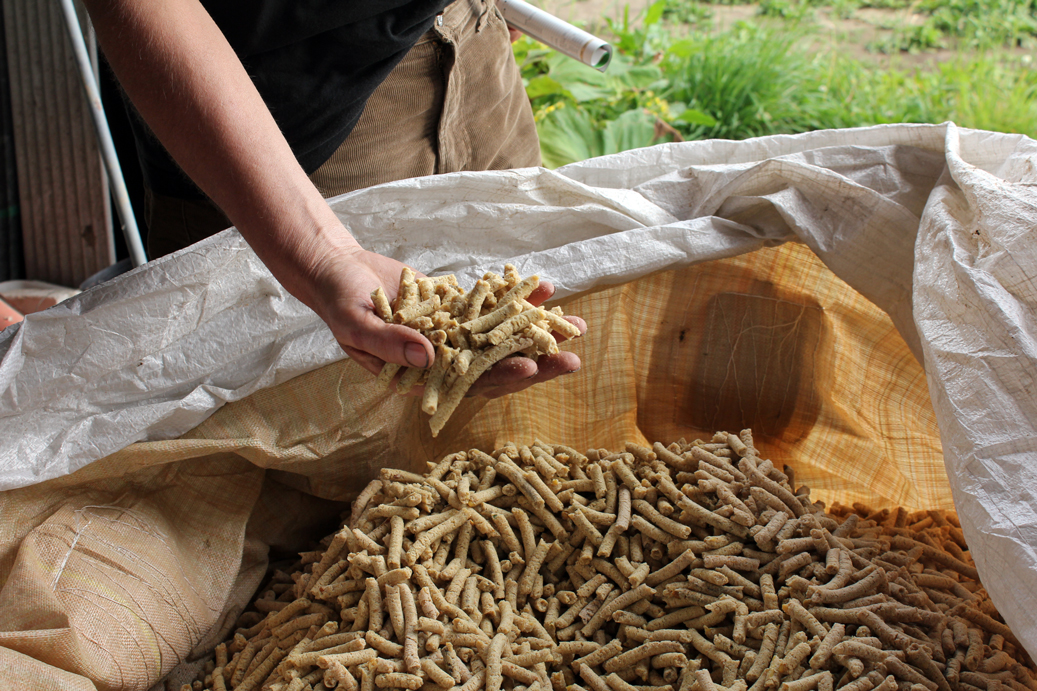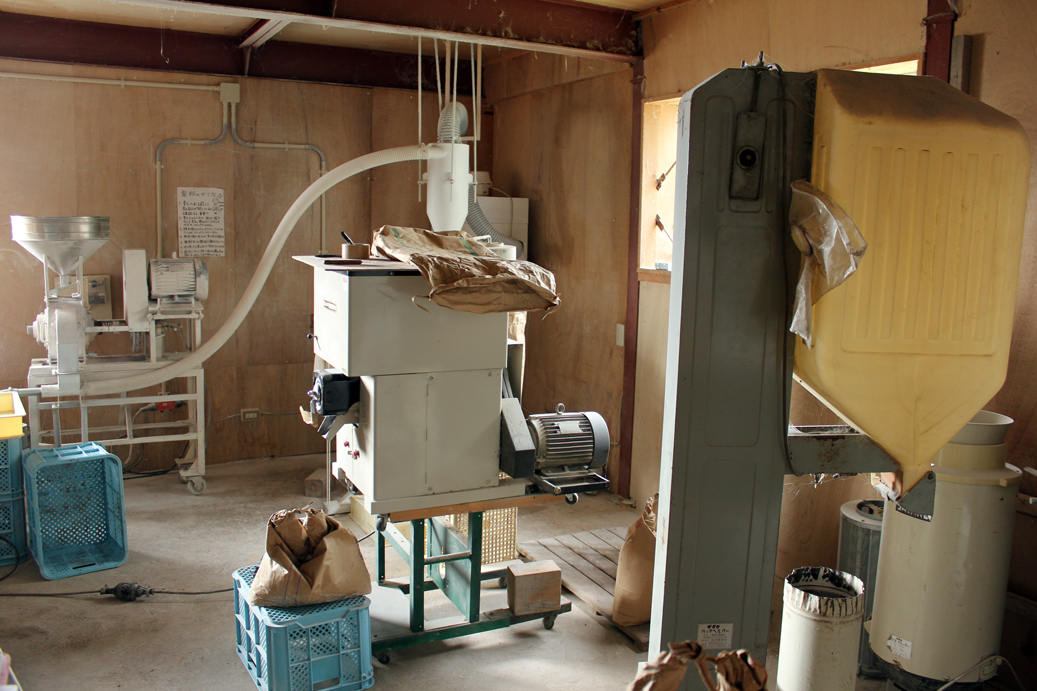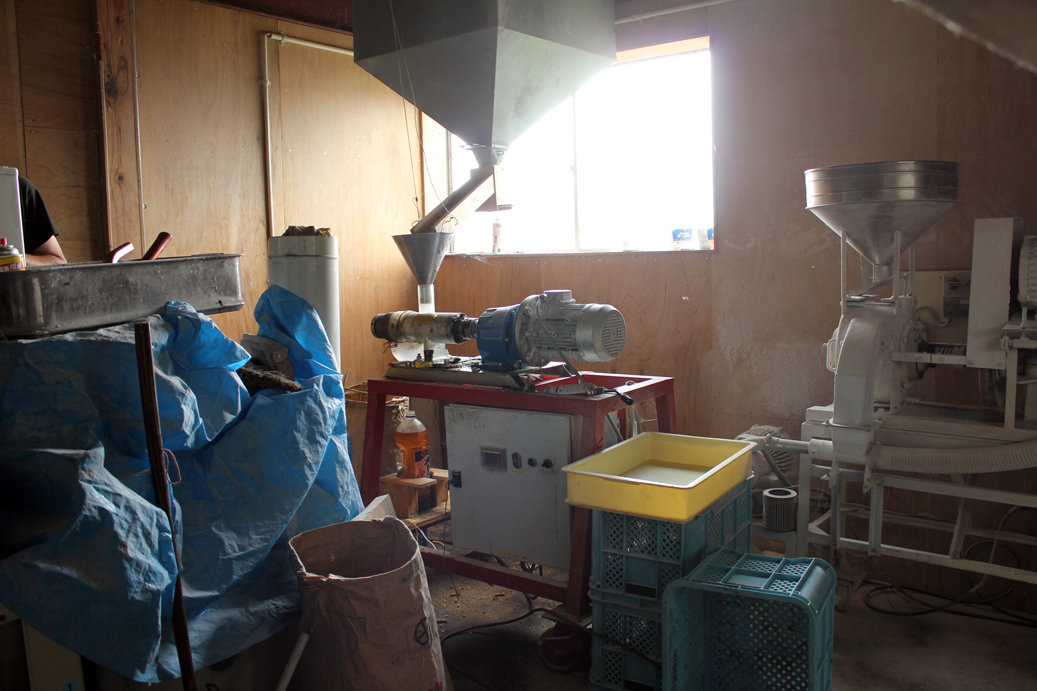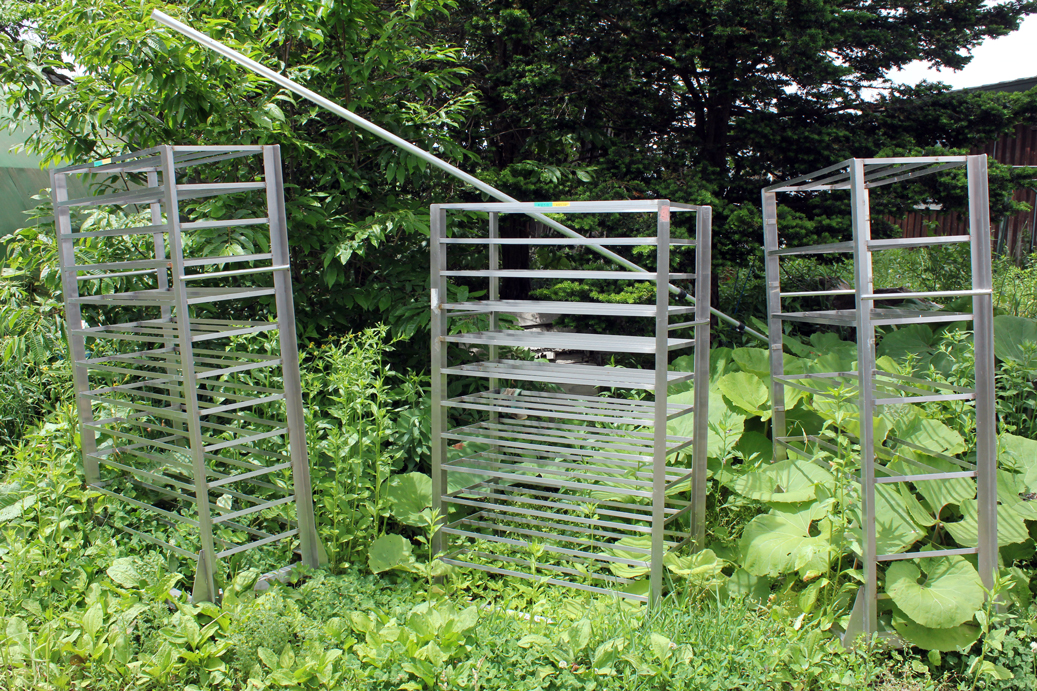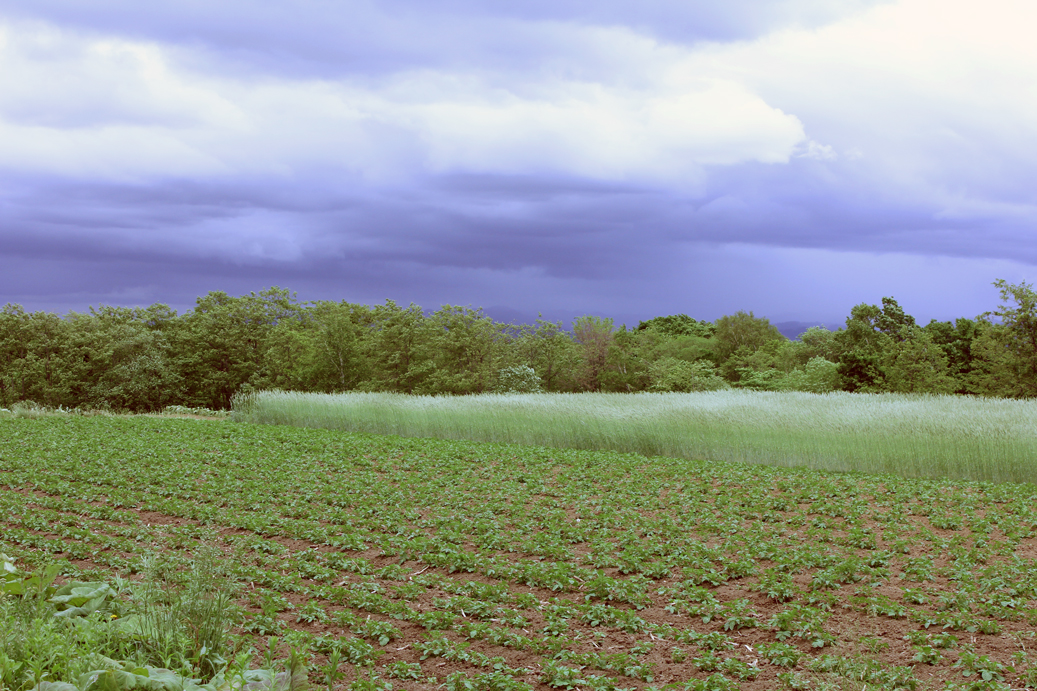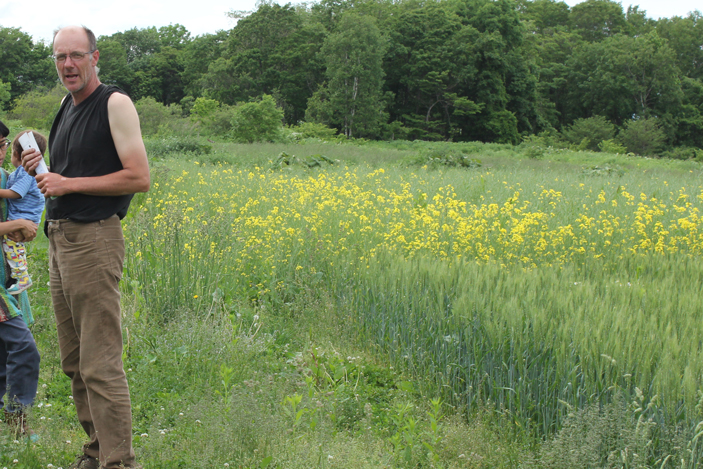Raymond Epp
Menno Village Farm
After World War II, Japan was 100% self-sufficient in terms of food; at the present time, it is somewhere below 40%. The TPP Museum spoke with farmer Raymond Epp from Menno Village in Naganuma for some insight. Among his striking illustrations of the speed of the changes:
From 1960 to 1965, nearly all of Japan’s 900 local oil presses closed, as subsidies for rape seed were cut and cheap grains from North America flooded in off the freight ships returning from bringing over “made in Japan” products. By the 1990s, 100% of Japan’s cooking oil was pressed from foreign oil seeds. Raymond is the only farmer restarting oil production in Naganuma, which alone used to boast 9 presses.
Within a history of such rapid changes to agriculture, it is clear that shifts aren’t only pushed by natural or random circumstances. Policy has driven much of Japan’s agricultural development, continuing into the present, when two thirds of a large farm’s income can come from government subsidies. The Trans-Pacific Partnership would eliminate much of the protections of Japanese farmers. What would the effects be?
TPP Museum: Does cooperative farm organizing happen around Naganuma, or are you pretty much on your own? If you start growing here, when does JA start knocking on your door?
R: We don’t sell anything to JA.
TM: But you’re not certified organic or anything, are you?
R: Philosophically I am opposed to the whole certification thing. When grain trading started, buyers from Europe would come and visually inspect grain and say, I want this bag of grain, I like this fame’s grain. After they developed grade 1, grade 2 yellow corn and so on, set standards of colour quality, protein, how much foreign material was in there, so then buyers could buy grains sight unseen. It broke the relationship between buyer and farmer. That’s what organic certification does too. You can get organic produce, but where does it come from?
TM: But small farmers and organic-ish practicing farms, they don’t often actually enter into the JA system, right?
R: There’s an organic farmers union that copied the whole system of JA, except it’s organic—but why copy the whole system? And once you have an infrastructure you have to pay for it; buy low, sell high, same kind of mentality comes in to pay for that infrastructure and the farmers are the ones who have to pay for that.
TM: So how are you doing it?
R: Sapporo is not that far away, only an hour. Up until now, all of our CSA vegetables just get delivered directly. The Ghandian idea of the constructive program is that you need appropriate scale technology for processing, so we have our own flour mill, we have our own bakery on the farm so we can go from seed to loaf; we also have an oil press so we can make all our own oil. We grew 2 hectares of rapeseed. There used to be almost 900 local oil pressed in Japan. In a 5 year time period they all closed.
TM: Which time, though?
R: 1960 to 1965.
TM: Where are they then?
R: There’s 9 plants all located next to the ports.
TM: So the seeds are imported and then pressed at the port?
R: Then they distribute from there. Japan was 100% self-sufficient after World War II. Then with the kind of diet education of the time, shipping wheat from North America began to increase. Incidentally, the development of Canola seed in Canada (documented in a book by Brewster Kneen) was supported by the government, Canola was public property, open pollinated varieties, for the sake of prairie agriculture. Just growing wheat, they thought maybe it would be a good idea to diversify. Now, who owns the seeds? A few transnational corporations. In the early 1990s, Japan imported 100% of its Canola from Canada. Part of the reason for that change, up until the early 1990s, the Canadian had this single desk selling wheat, the Canadian Wheat Board, and all of the grain for export would be moving on subsidies from the government who covered the rail costs to the port. All farmers would therefore receive the same price. It was a way to equalize things and treat farmers fairly, as Canada is a big place. So all of the Canola that was moving to the port was subsidized by the Canadian government. So the only thing the Japanese sellers had to do was pay for the ocean freight from Vancouver to Yokohama or wherever they would crush the oil seed. How many containers were already moving across the ocean to North America with goods made in Japan at that time? That container ship would be going back to Japan empty. So basically if they filled those containers with oil seed, it was almost free. In the early years, it would have been too much shock for the small oil operators to shut down immediately, so for a few years the small presses were given a permit or right to a certain amount of oil seeds, and the government stopped subsidizing local growth of oil seed, so the presses used this Canadian seed. What ended up happening, to ease the transition, the local presses sold their permits to larger processors, who consolidated the permits.
TM: What did these presses do afterward?
R: They just quit. Naganuma, for instance, had 9 presses. There were 670 hectares of Natane grown, from Chuo-Naganuma up to that ski hill, it was all natane. At that time the farms were still farms with horses, and they still had very diversified farming operations. They grew rape, vegetables and flax, with beautiful blew flowers. But then between 1960 and 1965, the subsidy was cut and farmers started getting rice subsidies, and this whole area became rice fields. The whole mentality the Union was pushing was to grow rice, because then you could get a car, and you could get a refrigerator, and you would have a good life.
TM: There was an outward tax on foreign rice, but also subsidies?
R: That’s right. They just shifted the subsidy, and the price of rice was high, so it happened fast. Talking to farmers around here, they just follow the money. We got some foundation money to start our oil press, and for the meeting I decided I was going to give a slide show of natane processing. I had the projector, the screen and the whole bit, flipped on the projector, first slide: nothing. There’s no photographs, it’s as if it never happened. There still some grandkids alive, and it would be a good oral history project. But all of the old equipment, it was just scrapped, not a single piece left. The kind of machines that were in use then are now produced in China. The machine that we got was from a farmer in Sweden, it’s very small and light weight, and portable. These older versions are made of cast iron and very heavy.
TM: Say this area was all natane, I am just curious how you would distinguish that from monoculture?
R: Well, it is part of rotation. Natane has some benefits—it fights nematodes, you can also produce honey, and the oil can also be used for lamps, which was the case in this area into the 1950s. So talk about eco-lifestyle. The shell is great for fertilizer. Moving into rice production, you immediately change everything. Farmers had to buy more seeds and more chemicals and chemical fertilizer. They had been using horses, but those went away and with that the manure. So the community economy was all broken. All these images of progress like cars etc. came at a huge cost. I just don’t think there’s been a whole lot of thought given to the shadow side of development and modernization.
TM: At this point, looking toward the future, what kinds of images do farmers respond to? Is there another stage, a bigger house?
R: At this point, they are still following the subsidy money, and the town government is too. There’s a reason why things like schools fail, which happened here recently; it’s not just a natural progression. This is part of policy decisions and choices that are made about the kind of agriculture to pursue. If you’re going to have bigger farms, you’re going to have half as many farmers. That’s a no-brainer. And farm debts are going to increase, and the only way it’s going to continue is through subsidies, all no brainers. What happens then when the subsidies get cut off?
There’s talk now with the TPP that if it goes through, they’ll eliminate all subsidies. The only thing that has supported this move to large-scale farming possible is subsidy money. There is a farmer in this town who has 100 hectares of land that is mostly rice. As rice consumption goes down, now they are paying farmers subsidy money to not grow rice. For example, farmers are getting ¥350,000 per hectare, plus if they grow high quality wheat, they will get more; up to the point that they can get ¥1,500,000 per hectare. Farmers are already working with an amount of land that they can earn a living on, and the subsidies pay for more land so they can expand their operations; the effect is that already existing large scale farmers are able to grow bigger because they get this money they don’t need. One farmer I know made $1,000,000 one year, but two thirds of that money was from subsidies from the government.
TM: Is that the reason why many people think farmers are all rich, and then now TPP is happening but not many people are paying attention?
R: What I have heard is that people want the Nōkyō (Farmers Union) for the consumers, it’s just that the Nōkyō is so corrupt. The reason why the Nōkyō is against TPP is they are fearing for their own survival. On the one hand, I am against TPP too, but for very different reasons. How do you oppose TPP? You go local, and you think about everyone who eats, and farmers, to recreate the system so that we don’t need imported seeds, chemicals or fertilizers. Nōkyō is against TPP so that they can control seeds, the chemicals, rather than allowing some foreign company to do it. They want to do it themselves and exploit farmers themselves.
TM: I heard JA started a shop in LA? In opening a direct shop and restaurants in Los Angeles, they claim Hokkaido’s brand of fresh and high quality vegetables. But what are they talking about when they oppose TPP?
R: They have a grain terminal elevator just North of New Orleans on the Mississippi. They source grain in the United States—they have their own ship, and their vessel is a “Panamax”—the maximum size that will fit inside the Panama Canal. They source their feed grains from the Midwestern United States and ship it to Japan for feed.
TM: If TPP actually happens, in some ways— just to play devil’s advocate—would it somehow be good for local agriculture, because it would destroy this system, but would that mean there would be more autonomous and other formations possible?
R: It would force people to have to make a decision. One of the myths of modernization is the social darwinist idea that the good always naturally prevails, and the weak die off; that the bad ideas and the powerless people die off and it’s always the good that succeeds. But what I am thinking is that good does not always win. What we are seeing now is that this system is failing in just so many ways: ecologically, culturally, creating so much isolation and individualism, and a growing gap between rich and poor. The system can’t be defended anymore. The control of seeds, for instance: who says you can patent life? Of what benefit or good is that? It’s good for the people who are powerful, but it doesn’t help anybody else. So I feel that good has to be chosen, and this will be forcing people to choose life. This system is just going down.
TM: Will it change the landscape, or something physical, tangible?
R: An individual farmer can’t do it, but if there are new kinds of alliances, it could make some huge differences. I was thinking of a historical example, and the Nōkyō setting up these restaurants and shops in LA; in Canada, where I was living in the 1990s, when NAFTA was passed, the prairie provinces all had their pool elevators where the farmers sold their grain together to the grain companies. The purpose of creating those pool elevators was because grain companies were taking possession of grain from farmers and never paying them, promising to pay after the shipments to Europe. Of course this never happened. The Canadian Grain Buyers Act was passed in the 1930s, and that’s when the pool elevators were born. When NAFTA was passed, one of the ironies of it all is that the pool elevators in the different prairie provinces sold their shares off; Saspool in Saskatchewan sold their shares to Cargill; United Grain Growers in Alberta made some alliance with some other large grain corporation in the United States. What I am thinking, is that because of this clean image that Hokkaido has, that it will be very easy to create a brand, and that Fonterra, the big New Zealand dairy operation, is going to enter into an agreement with the Nōkyō, creating a Hokkaido brand of milk that they can ship out worldwide, or probably target China, and also Malaysia, Singapore. They might even be able to sell fresh milk. New Zealand is just creating powdered milk, it’s not fresh milk. They have all that milk powder, and they can use that to destabilize other nations’ milk markets, as they will use the powdered milk for processing. It used to be that New Zealand was into sheep, but they just shifted all of their production to dairy.
TM: Does that mean that Hokkaido JA is supporting this idea of getting the farmers to expand to larger scale, and then can control the high quality?
R: Fewer numbers to deal with, at the end of the day. Of course, those few farms will be highly capitalized, and then at one point they will be presented with a choice: either we shut down, or we enter into a partnership with these guys. When you have all this production capacity and then the processors just say, we’re going to give up, that’s just kind of blackmailing. They may not really do it, but give the farmers the impression they have no choice. しょうがない. When it came time for school consolidation here, for example, the board of education said, we’re going to do this, without any community input whatsoever. しょうがない. I think that’s whats going to happen.
TM: But can this place even support large scale industrial agriculture?
R: One of the things that makes dairy production extremely expensive especially in Japan, as compared with New Zealand, is snow. And also earthquakes. The infrastructure that you need to build in Hokkaido is extremely expensive. In New Zealand you need very little infrastructure. Basically, it’s all grass-fed, they don’t have a huge amount of snow, they don’t have to have the cows inside, and don’t have to store all this feed. That’s huge.
TM: It sounds like the decision to start milk farming is just wrong. In Japan, there wasn’t even so much milk consumption before World War II.
R: And the way cows are being treated, they are basically just milk factories themselves: grain goes in, milk comes out the other side. Especially in the Tokachi area, the cows are pushed very hard, and very high production, 10,000 kgs per year. Almost half the cost is feed, which is imported. There is a professor I know from Rakuno Gakuen who spent time in New Zealand, and is championing grass-dairies. You can dry your cows off in the winter time and have low-quality feed, and then you can cut down on the running costs of your operation substantially. Your milk production is about half, but your infrastructures are way lower, and the amount of profits the farmers are keeping themselves is better. The only thing that is keeping this possible though they look profitable, again, is subsidies. Once you take those away, they are a real disaster.
TM: With grass feeding, is it possible to have that kind of land here?
R: Not to maintain that diet, on the level of meat and dairy people are presently consuming. My understanding of organic agriculture are more based on the ideas of Sir Albert Howard. Livestock played a very important role in maintaining health of land, and it’s having grass in the rotation. Japanese farms until the 1960s did their farming with horses, so there was always grass. But moving to chemical fertilizers, there was no need for grass in rotation, no manure going back to the fields. Your production goes way up, but we are paying the price now, 50 years later, for having high production, but soil health is just horrendous. When farmers started growing cabbage and broccoli here 40 years ago, there were no bugs, but now, there’s more and more bugs, and I would say there’s a direct correlation. The process of that change is also gradual, so one doesn’t notice. But why? There is a lack of analysis, a tendency to follow the instructions in order to receive the subsidy. We don’t do that and as a result there are some subsidies we just don’t get.
All of these changes have occurred so fast here. In a tractor history museum in Furano, and in 1953 Japan started to import tractors from all over the world, but before that it was all horses. There is a timeline graph that shows the lines cross in 1967, when there were still 350,000 horses being used. Until 1970, all the rice around here was planted by hand. There was something good about that culture of people working together. But things have changed so fast, and at this point there is just no desire to think about anything regarding the past. Been there, done that, 大変. Being a couple generations removed from that, where city people are deskilled and isolated, and there is not much of a future anymore, no jobs, and people are starting to be willing to entertain new ideas. How do we get there? Do some analysis and make some steps. Farmers are out here talking about the loss of natane; but people had to harvest it by hand and at night time, because if you harvest it during the day when the humidity levels were low, the seeds would shatter, the pods would open up and the seeds would drop. Kids from that time remember waking up at night and their parents were not there, they were out in the field harvesting natane. Later on they grew it themselves and they had to thresh it by hand. So it was very hard. But they also said, the flowers were very beautiful, just pure joy for about 3 weeks.
TM: So you are the only farmer to make natane around here?
R: Yes.
TM: Emi mentioned she had heard there wasn’t much visible resistance to TPP in Biei compared to the next town over, Shihoro, do you know why that might be?
R: It’s weird, the large-scale farmers, most of them are for the TPP. I don’t quite get the logic, but I think if the deal goes through, they will be able to buy their seeds, their fuel, their tractors and all kinds of agricultural machines, cheaper than they can now. And to be able to directly buy these things themselves instead of through JA.
TM: We had heard that TPP would change the landscape from the famous patchwork, so I thought that in Biei they would be concerned, but people from there said there is nothing like the resistance in other places. Is that because of the potato chips company, Calbee?
R: Also how many farms are dependent on tourism? It took me a while to understand that farmers are not all one group. Not everyone would be dependent on that.
TM: Do you think TPP would change the landscape around here?
R: A lot of Naganuma is rice field, but this is the largest soybean growing town in all of Japan, but this is all due to subsidies. Wheat and soy are growing in rotation, extremely simple. They just have to spray a little. So there is very little labour involved. And these large-scale farmers just spend their summers playing golf.
But it’s a vicious cycle. Basically machines replace people. But now it’s getting to the point that there aren’t enough people to run the equipment. The combines are just continually harvesting, and there is a trailer that just unloads the combine because it would be too costly to stop the process. Now it is possible to remote-control that tractor and trailer that’s driving beside the combine. When it gets full, then you shut off your auger and that trailer will move to a designated spot and shut down. At Okayama University, they were working at robotic agriculture for Japan. At that time in the early millennium, they were figuring our how to quantify the farmer’s decision-making process. If you could create the right model, with two deviations off the norm, and you could theoretically create optimal decisions. They interviewed all these farmers about when to plant, when to spray etc. and they might as well have killed the farmers afterward. On the homepage it said, once we develop this software, anybody can farm! It doesn’t say, anybody can farm who can afford to buy the program and the machines… We are in the process of creating a world where production is going to happen without a need for people. The whole purpose of eating and making the connections between eaters, farmers and knowledge of the soil, it’s all broken.
TM: It’s heading to an almost 100% consumption society.
R: And how does all that production happen, and what is it all for? I don’t believe just having food is going to be enough to keep people alive. There’s going to be a need for meaning and purpose.

